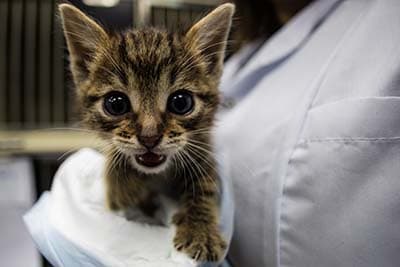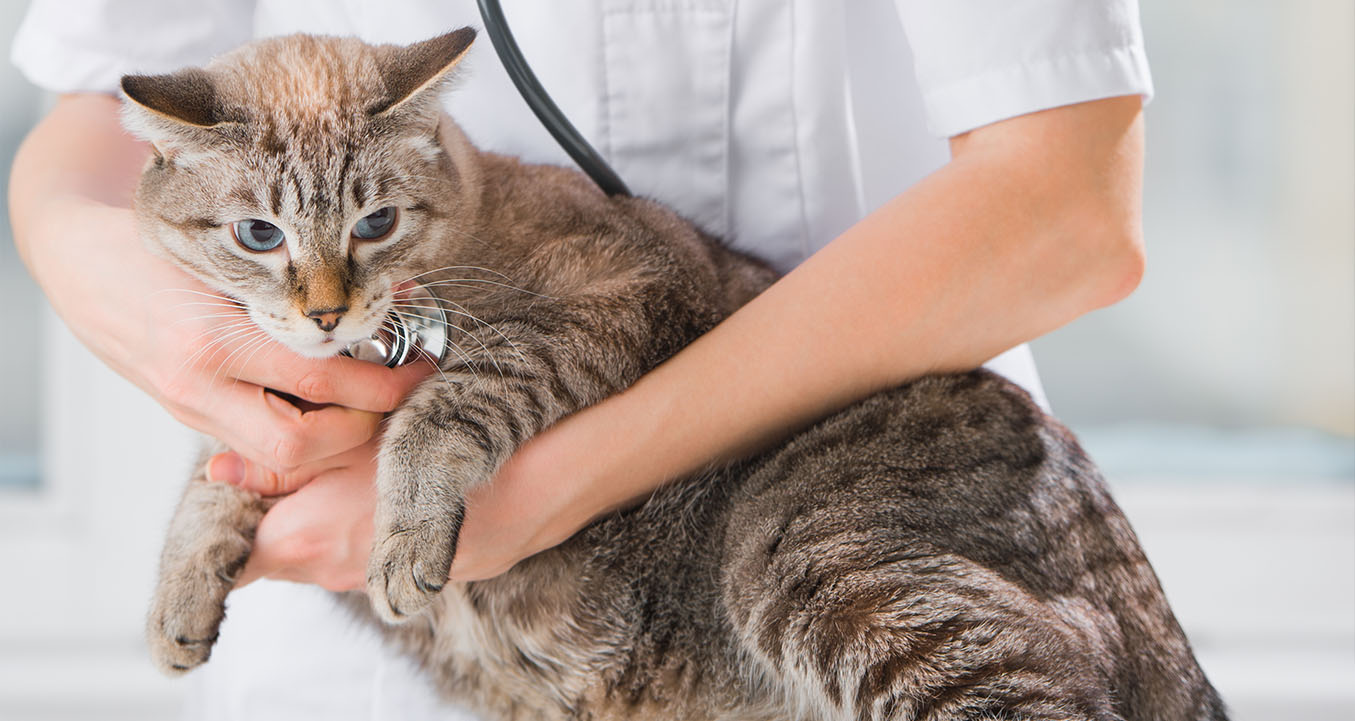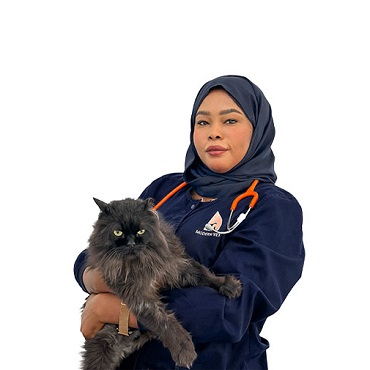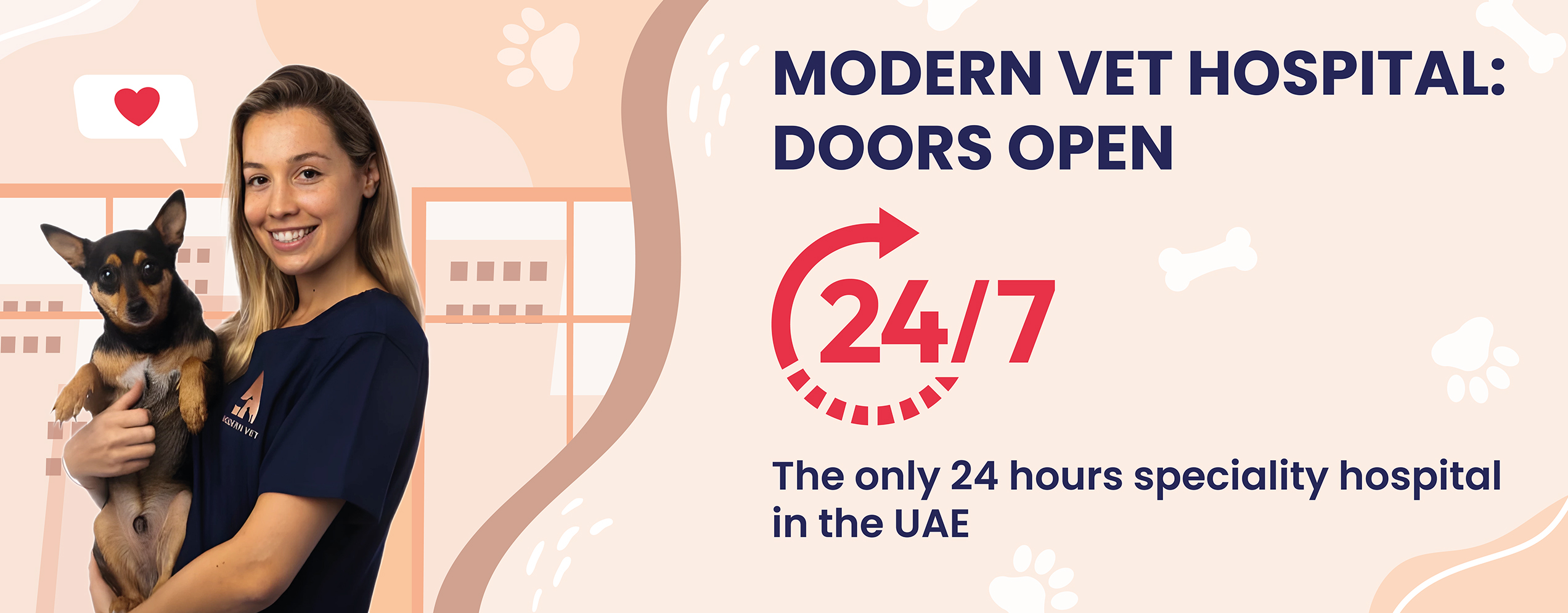ModernVet offers professional cat spaying and neutering services that deliver top-level care to feline pets. The procedures form an essential part of responsible pet care because they promote long-term health for cats while helping reduce the number of homeless animals. Our team of skilled veterinarians conducts these surgeries with priority on patient safety while ensuring comfort and fast recovery. The services at ModernVet combine pet wellness benefits with community-based animal welfare improvements.
The world loves cats because of their affectionate nature and independent personality, as well as their playful character, which makes them among the most beloved pets globally. The decision to bring a cat into your home comes with vital health choices which ownership requires. Spaying or neutering stands as one of the most vital health decisions pet owners must make. The following guide explains both the advantages and expected outcomes of these procedures and why choosing them represents the most loving decision you can make for your cat.
Key Reasons Why Your Cat Needs Spaying or Neutering:
Prevent Unwanted Litters & Help Reduce Overpopulation
Minimize Spraying & Unwanted Mating Behavior
Protect Female Cats From Uterine Infections (Pyometra)
Support Longer, Healthier, & Happier Lives
Dramatically Reduce Risk Of Mammary & Ovarian Cancer
Prevent Spread Of Feline Leukemia & FIV
Eliminate Risk Of Testicular Cancer In Male Cats
Promote Calmer, More Affectionate Behavior At Home
Decrease Aggressive & Territorial Behaviors
Ensure Safe, Painless Surgery With Modern Anesthesia
Reduce Roaming & Risk Of Accidents Or Fights
24/7 Post-Surgery Support & Recovery Guidance At Modern Vet

What Exactly Are Spaying and Neutering?
Veterinarians perform spaying and neutering as standard surgical procedures, which prevent cats from reproducing. The surgical operations known as spaying and neutering describe different procedures for male and female cats despite their common usage.
- The surgical procedure known as Spaying (Ovariohysterectomy) targets female cats. A surgical operation removes the ovaries together with the uterus from female cats. The elimination of these organs through surgery stops both heat cycles and pregnancy capabilities in cats.
- Male cats undergo the procedure of neutering through Orchiectomy or Castration, which requires the removal of the testicles. The primary source of testosterone is eliminated, which stops breeding instincts and multiple hormone-driven behaviors.
General anesthesia protects cats from experiencing pain during these major surgical operations. Our surgical team at ModernVet employs modern monitoring systems and surgical approaches to deliver safe procedures from initiation to completion.
The Overwhelming Case for Spaying and Neutering
Spaying or castration is a lifetime decision for your cat, which goes much further than not having kittens. It offers a multitude of health and behavior benefits which enhance your cat’s lifestyle and bind you closer together.
For the Community: Addressing the Overpopulation Crisis
The population problem in cats is staggering. A single unspayed female cat and her kittens can theoretically produce hundreds and hundreds of thousands of kittens within a span of just seven years. That means millions of adoptable, healthy cats are euthanized in shelters each year simply because there are not enough homes. When you spay or neuter your cat, you are a key part of the answer, which reduces the number of animals ending up on streets or overcrowded shelters.

Spaying for Your Cat’s Female Health Advantage
Spaying offers dramatic, life-saving health advantages for female cats:
- Prevents Uterine Infections: Spaying eradicates the possibility of a life-threatening condition called pyometra, which is a common occurrence in unspayed females. Pyometra is a life-threatening infection in which the uterus is filled with pus. It is a fatal condition if not treated.
- Drastically Reduces Cancer Risk: Getting a cat spayed at least once when she is as young as five months old before her first heat cycle reduces her risk for mammary (breast) tumors by over 90%. Aggressive and more commonly malignant tumors are typical for this type in cats. It also eliminates her risk for uterine and ovarian cancers completely.
- Puts an End to Pregnancy-Induced Stress: Both pregnancy and whelping are accompanied by risks like health issues for which prompt veterinary intervention is imperative. Spaying eradicates such risks.
Benefits for Your Cat’s Health (Neutering)
Spaying or neutering is equally advantageous in health respects for male cats:
- Removes Cancer Risk for Testicles: Removing testicles altogether means there is no risk for testicular cancer at all.
- Decreases Prostate Problems: Less common in cats compared to dogs, neutering significantly reduces the risk of developing prostate issues in later life.
- Decreases the Spread of Disease: Intact males are driven to fight over territory and mates. These fights often result in bite wounds and scratches that can transmit serious infectious diseases like Feline Immunodeficiency Virus (FIV) and Feline Leukemia Virus (FeLV). Neutered cats are far less likely to engage in these dangerous altercations.
Behavioral Benefits for a Happier Home
Most difficult behaviors in cats are caused by reproductive hormones. Getting your cat neutered can produce a more relaxed, happier companion.
- Reduces Roaming: Full males are heavily predisposed to roaming off a property in pursuit of an estrous female, leaving them exposed to accidents in traffic, predators, and fighting. Neutering significantly reduces this propensity.
- Curbs Urine Spraying: Intact males mark their territory by spraying pungent urine on vertical surfaces. While neutering is most effective before this behavior starts, it can stop or significantly reduce spraying in the vast majority of cats. Even some females spray when in heat, a behavior that spaying also prevents.
- Ends Heat Cycles: An unspayed female in heat is a real headache for the owner and cat alike. She’ll yap nonstop, pace anxiously, and demand attention at a constant level in an attempt to garner a suitor. It happens every few weeks during breeding season. Spaying stops this annoying behavior.
- Makes for a More Affectionate Pet: Freed from the hormonal imperative to reproduce, a number of cats are less attentive to their human family members but become softer and more affectionate friends.
- The Optimal Timing: When to Spay or Neuter Your Cat
- As a general practice, veterinary practitioners recommend early spaying or neutering before a cat reaches sexual maturity.
- Traditional Age (5-6 Months): It is a frequently recommended age range since it provides for the process to occur before the first heat cycle in females and before territorial behavior like spraying in males.
- Early-Age Neutering (8-16 Weeks): Most shelters and animal clinics now do early-age or “pediatric” neutering. It is totally safe for fit kittens and has an additional benefit in enabling ultra-rapid recovery periods. It is a valuable resource for animal shelters in ensuring all adopted animals are sterilized before going to a new home.
Is it ever too late? No. Even though it is best started young in life, it is still thoroughly recommendable for adult cats as well as for older cats. Even at any age in life, such health advantages as prevention of pyometra and testicular cancer are still worthwhile.
Services Offered For Cat Spaying & Neutering Include:
Pre-Surgical Health Check & Blood Testing
Postoperative Monitoring & Recovery Support
Safe General Anesthesia & Pain Management
Complimentary Hill’s Science Plan Recovery Food For Kittens
Modern Surgical Techniques For Faster Recovery
E-Collar & Recovery Suit Guidance
Female Spay (Ovariohysterectomy) Procedures
Behavior & Weight Management Advice After Surgery
Male Neuter (Orchiectomy) Procedures
Follow-Up Examinations & Incision Care Checks
Early-Age & Adult Cat Sterilization Options
24/7 Veterinary Support At Modern Vet

Your Cat’s Surgery: A Guide for Pet Parents
The knowledge of surgical procedures will reduce your stress about your cat’s upcoming surgery day.
Pre-Surgical Care:
- Your veterinarian will check your cat’s health through a physical exam and blood tests before surgery to confirm their readiness for the procedure. Your veterinarian will tell you when to stop feeding your cat before surgery, which usually requires an overnight fast.
The Procedure:
- The veterinary team at our clinic will monitor your cat under general anesthesia throughout the surgical procedure. The veterinary team implements modern pain management techniques through pre-procedure, intraoperative and postoperative injections to maintain your cat’s comfort level.
Postoperative Recovery:
- Young cats with good health experience fast recovery times after surgery.
- The clinic staff will keep your cat under observation until they become fully awake from anesthesia before releasing them home. The majority of cats need to stay in the clinic for only one day after surgery. Your cat will remain drowsy for the entire first day following surgery.
- Create a peaceful recovery area for your cat, which should be both comfortable and restricted from other pets and children. Your cat needs to avoid running and jumping activities for 7-10 days because it helps the incision heal correctly.
- Daily inspection of the incision area should be performed to check for abnormal redness, swelling or discharge. Your cat should never touch the treated area with their tongue. The E-collar or recovery suit serves as a necessary tool to stop your cat from licking the treated area.
- Feeding: The first night meal should be smaller because anesthesia can lead to temporary nausea in cats. Every kitten undergoing Spaying and Neutering at Modern Vet receives Hill’s Science Plan recovery food for free to aid post-surgical recovery. The free recovery food from Hill’s Science Plan is available only to kittens who get spayed or neutered at Modern Vet. Adult cats do not qualify for this food promotion.
Recovery Timeline:
- The recovery period for male cats usually lasts one to two days, but they need to avoid strenuous activities. The abdominal surgery performed on female cats requires a longer recovery time, but they usually start showing improvement within several days. The complete recovery of the incision site requires between 10 and 14 days.
The Best Choice for a Lifetime of Health
Spaying or neutering your cat represents both love and a permanent dedication to their ongoing wellness and contentment. The decision to spay or neuter your cat stops diseases while enhancing their behavior and reducing the devastating problem of excessive pet numbers.
Your cat will receive a healthier and happier existence when you make this decision. Your feline companion will receive protection while you help create a better environment for all animals in the community.
Contact ModernVet to arrange a consultation for your cat’s spay or neuter procedure. You can reach ModernVet by booking online or by calling us at 800-82 to schedule an appointment and support responsible pet care.
FREQUENTLY ASKED QUESTIONS
Learn more about "CAT SPAYING AND NEUTERING-New design"
Caring for an animal is much more than having medical knowledge. It requires dedication and empathy. Here’s what we’re doing differently at our clinic because pets deserve a higher level of care. That’s why numerous families from every part of the city keep choosing us.

































